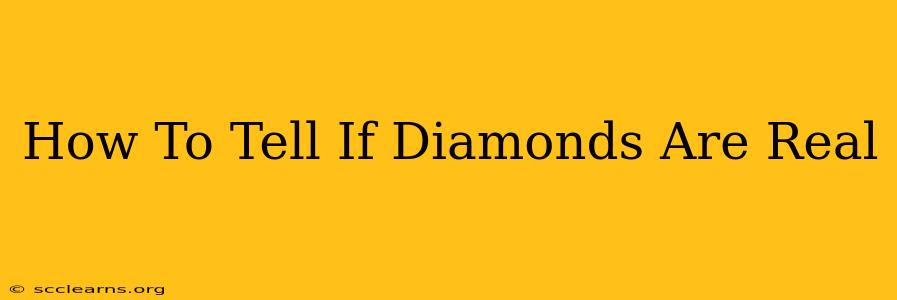Buying a diamond? It's a big investment, so you want to be absolutely sure you're getting the real deal. Unfortunately, diamond counterfeits are surprisingly common. This comprehensive guide will equip you with the knowledge and tools to confidently distinguish genuine diamonds from imitations. We'll cover various methods, from simple at-home tests to professional evaluations.
Simple At-Home Tests for Diamond Authenticity
While these tests aren't foolproof, they can help you weed out obvious fakes and give you a preliminary assessment.
1. The Fog Test
This is a quick and easy first step. Breathe on the diamond. A real diamond's surface will quickly dispel the fog due to its high thermal conductivity. A fake diamond, like cubic zirconia, will retain the fog for a longer period.
2. The Magnification Test
Examine the diamond closely using a 10x jeweler's loupe (or even a strong magnifying glass). Look for inclusions (internal flaws) and blemishes (external flaws). Real diamonds almost always have some imperfections, while perfectly flawless stones are highly suspicious. Perfectly flawless stones are extremely rare and costly.
3. The Light Test
Real diamonds exhibit a unique brilliance and sparkle. Hold the stone up to a light source and observe its reflection. A real diamond will disperse light in a brilliant, multifaceted way, producing a bright, fiery sparkle. Imitations tend to have a duller, more glassy shine.
4. The Heat Test
This test requires caution. Heat the diamond with a lighter for a few seconds (don't hold it too long!). A real diamond will retain its heat for much longer than a fake. This is due to diamond's high thermal conductivity. However, this method is not recommended for treated diamonds and can damage the stone.
More Advanced Methods for Verification
If you're still unsure after the at-home tests, or if the diamond is particularly valuable, it's best to seek professional verification.
1. Professional Appraisal
A qualified gemologist can use advanced tools and techniques to accurately determine the authenticity of your diamond. This includes using specialized equipment like a refractometer to measure the refractive index and a diamond tester to measure electrical conductivity.
2. Checking for Certification
Reputable jewelers provide certification documents from laboratories like GIA (Gemological Institute of America) or AGS (American Gem Society). These certificates provide detailed information about the diamond's characteristics, including its clarity, carat weight, cut, and color. A certificate is strong evidence of authenticity.
3. Checking the Seller's Reputation
Buy from trustworthy jewelers and reputable sources. A well-established jeweler is more likely to sell genuine diamonds. Check online reviews and customer testimonials before making a purchase.
Identifying Common Diamond Imitations
Knowing what to look for in common diamond imitations is crucial. Be aware of these:
- Cubic Zirconia (CZ): Highly refractive and sparkly but lacks the internal flaws usually found in natural diamonds.
- Moissanite: A naturally occurring silicon carbide that is very similar to diamonds in appearance but has a slightly higher refractive index. Advanced tests are necessary to distinguish it from a diamond.
- Glass: Easily identifiable by its low refractive index and lack of brilliance.
Conclusion: Don't Settle for Anything Less Than Authentic
Investing in a diamond is a significant decision. By using the methods outlined above, you can significantly increase your chances of acquiring a genuine diamond. Remember, when in doubt, always seek professional appraisal. Don't hesitate to ask questions and verify the authenticity of the diamond before making a purchase. Your peace of mind is worth the extra effort.

